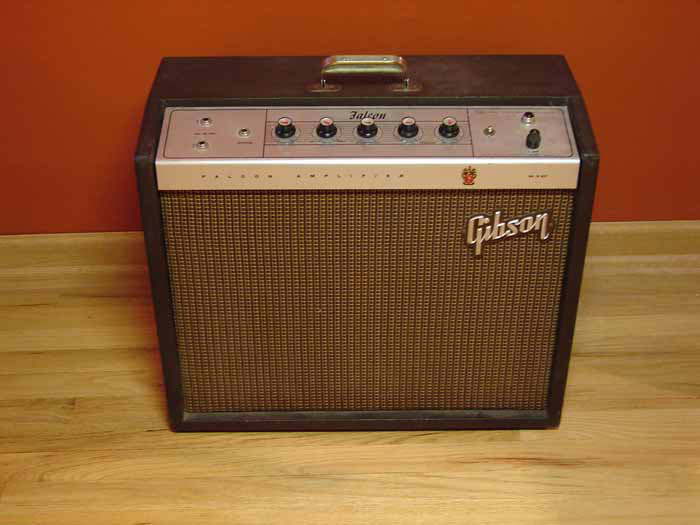

As far as I know, Mojo is the only place making the correct output transformer. Among the most rare and sought after Gibson amps, the tweed GA-77 is incredibly. The hardest part about building the 5E8 is getting the right transformers (I'd say). You can see the pair of big bottle (ST envelope) 5U4G rectifiers, which is what makes this amp's power supply so stiff, and the pair of big bottle RCA 6L6-G power tubes. The above thumbnails are of my low power Tweed Twin, the 5E8-A circuit. The speakers are Weber, alnicos on top and ceramics on bottom. It has NOS RCA preamp tubes, and a pair of NOS Tung-Sol 5881s. The cabinet and transformers are from Clark Amplification. The two thumbnails to the left are of my '59 Bassman clone. If I really think about it, I shouldn't keep this amp. I had a '62 Vibrolux and a '61 Deluxe but neither of them really worked for me and I sold them too. I had a '66 DR, but I never really warmed up to it and I eventually sold it. To my ears, it's hard to tell the difference between this amp and blackface Deluxes. To the right is a very clean 1970 Deluxe Reverb. Of course, the internal voltages are too high to really be a tweed circuit, but it sounds okay. I've got a '66 Blackface Champ and a couple of Silverface models, one of which I modified to "tweed" specs. Of all Fender amps, I prefer the sound of the tweed circuits and this Champ sounds good at any volume.


On the left is my everyday practice amp, a 1963 Champ. When I first started out, I bought a bunch of old Gibsons and Fender amps, and amps by other, much more obscure. Getting parts for these old amps is a challenge, but I recently came across a site that offers some parts for GA 20s. This is the GA-5 with the EL-84 power tube. The GA-20 and GA-50 are nice sounding but somewhat mellow amps, and the GA-5 is a handy alternative to a Champ. That's certainly what the previous owner used it for. The GA-25 is maybe better suited as a harp amp. The GA-6 is the best sounding amp of the bunch, one of the best I own. Finally, I found the time to build a small 1-watt stereo hifi amp. I also built a speaker cabinet for the JTM45 head. I've built a tweed Fender Bassman (5F6-A), a tweed Low Power Twin (5E8-A), another 18 Watt in a head cabinet, a Marshall JTM-45 clone. I made a clone of the Marshall 18 Watt amp and it turned out pretty well. They used a tube design, and some had reverb and tremolo. These were basically copies or variations of Gibson and Fender amplifierscitation needed. Gibson produced Epiphone amplifiers in the 1960s. When I first started out, I bought a bunch of old Gibsons and Fender amps, and amps by other, much more obscure, makers. While vintage Fender amps always command high prices, Ampeg guitar amps such as the Reverberocket can often be found for a decent price.5. The rest is occupied by some metal, a few electrical components, a speaker (usually), and some tubes. Guitar amplifiers are large boxes full, mostly, of air.


 0 kommentar(er)
0 kommentar(er)
